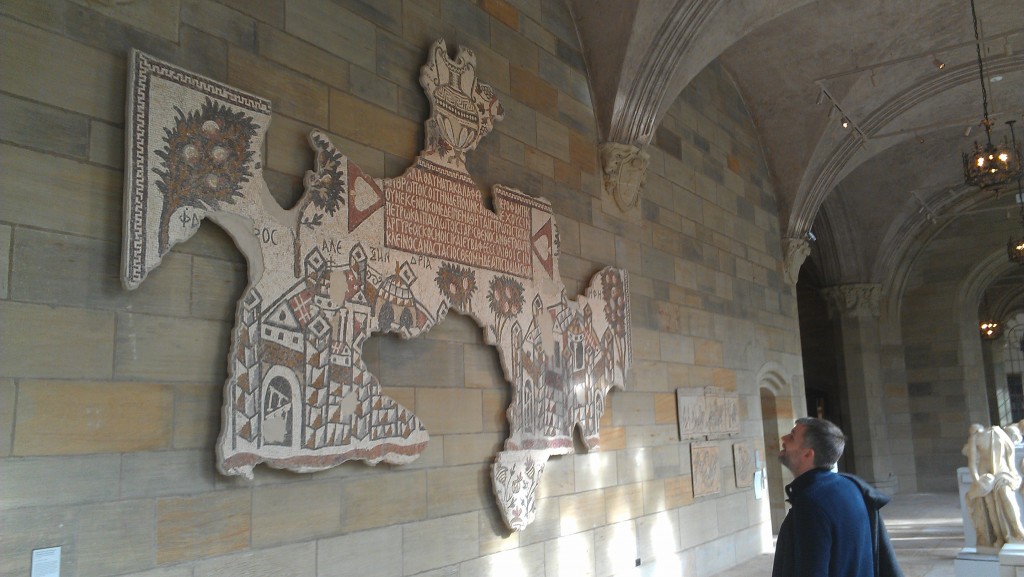Last Wednesday, 12/12/12, at 12:00 pm was a popular time for wedding ceremonies around the country. But it was also the ribbon-cutting ceremony for the grand re-opening of the Yale University Art Gallery.The New York Times offers a glowing review today, highlighting the museum's "just right" and "just enough" sense of balance:
And it takes a particular kind of museum to place old and new art genres in natural equilibrium, as Yale does in a pre-Columbian gallery that displays a classical 15th-century ceramic head of the Aztec god of music against an exacting 21st-century watercolor copy of a Maya mural made by a young, Yale-trained archaeological illustrator.Balance. For decades weve had an art culture that tries to wow us with too muchness blockbusters, biennials, bank-breaking museum buildings no one needs and that ends up delivering way too little. Could it be that the day of just enough is upon us, and that Yales just right museum is a bellwether?
I was lucky enough to be able to attend the opening, but I spent all of my two hours in one section of the exquisitely refigured space: the collection of Ancient Art. Here is one of the mosaics from Jerash (ancient Gerasa), which depicts the cities of Alexandria and Memphis:[caption id="attachment_22320" align="aligncenter" width="614"] A brilliant theologian (not me) gazes at the map from Jerash[/caption]This room was only the antechamber, though, for the real destination of my pilgrimage. Enclosed in a room all its own are the highlights from the excavations that took place during the 1930's at Dura-Europos, Syria, on the Euphrates. Fragments of the synagogue, the Mithraeum, and the house-church receive most of the attention. And indeed the new set-up of the Mithraeum -- so that you can stand within it and approach the altar -- is enough to make anyone feel like Indiana Jones.But my own recent research (here and here) has focused on revisiting, reinterpreting, and, in some cases, arguing for new identifications of the extant wall paintings from the 3rd c. house-church and baptistery discovered at Dura-Europos. I wrote about some of this for Commonweal last year, when parts of the exhibit were on display in New York. The new exhibit of these fragments of the earliest securely dateable Christian ritual space, most of which have been warehoused since the late 1970's, looks like this:
A brilliant theologian (not me) gazes at the map from Jerash[/caption]This room was only the antechamber, though, for the real destination of my pilgrimage. Enclosed in a room all its own are the highlights from the excavations that took place during the 1930's at Dura-Europos, Syria, on the Euphrates. Fragments of the synagogue, the Mithraeum, and the house-church receive most of the attention. And indeed the new set-up of the Mithraeum -- so that you can stand within it and approach the altar -- is enough to make anyone feel like Indiana Jones.But my own recent research (here and here) has focused on revisiting, reinterpreting, and, in some cases, arguing for new identifications of the extant wall paintings from the 3rd c. house-church and baptistery discovered at Dura-Europos. I wrote about some of this for Commonweal last year, when parts of the exhibit were on display in New York. The new exhibit of these fragments of the earliest securely dateable Christian ritual space, most of which have been warehoused since the late 1970's, looks like this:
So in this holy season, if you are looking for a place to visit to spark thought, wonder, and faith, you might consider the redesigned Yale University Art Gallery. And when you're there, take a moment to walk alongside the procession of women toward the font.
